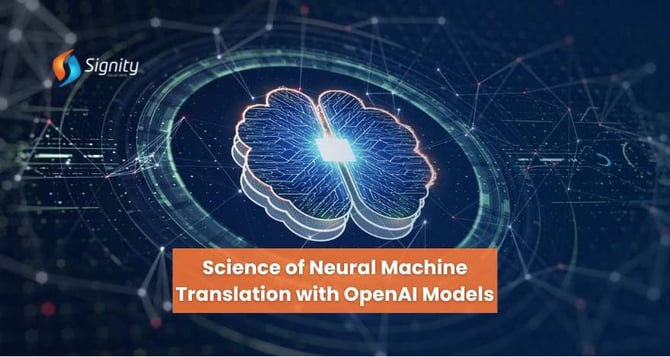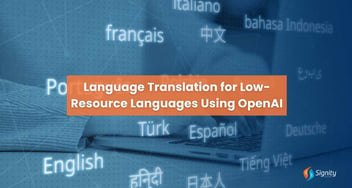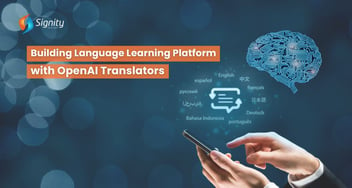Science of Neural Machine Translation with OpenAI Models
Delve into neural machine translation with OpenAI models. With insightful code snippets and guidance, construct your own translator and unlock the potential of cutting-edge technologies like ChatGPT and Generative AI.

Machine translation, the art of seamlessly converting text from one language to another, has undergone a paradigm shift with the emergence of neural machine translation (NMT) models. OpenAI's groundbreaking models, including GPT-3 and its successors, have been at the forefront of this transformation, driving unprecedented progress in the field. In this discourse, we delve into the intricate science behind neural machine translation using OpenAI models and provide insightful code snippets to kickstart your translation endeavors.
Achieve 98% Accuracy in Translation Projects
Discover how our tailored solutions, integrated with ChatGPT and Generative AI, can elevate your translation projects to new heights of accuracy.
Understanding Neural Machine Translation
Neural machine translation operates within the realm of natural language processing (NLP), leveraging sophisticated deep learning methodologies to translate text across different languages autonomously. Unlike conventional rule-based or statistical translation systems, NMT models, with their adeptness at capturing intricate linguistic nuances, offer unparalleled fluency and context preservation.
The Mechanics of NMT
Central to NMT is the "sequence-to-sequence" neural network architecture. Here's a glimpse into its core components:
-
Encoder: This segment of the model assimilates the source sentence, encapsulating its semantics and contextual essence into a fixed-length vector representation.
-
Decoder: Taking cues from the encoder's output, the decoder meticulously crafts the translation, word by word, ensuring coherence and fidelity to the target language.
-
Attention Mechanism: Vital for handling lengthy sentences, the attention mechanism enables the model to selectively focus on different segments of the source sentence during translation, thereby preserving context.
OpenAI Models Pioneering NMT
OpenAI's language models, epitomized by GPT-3 and GPT-4, serve as versatile assets that can be fine-tuned to excel in specific NMT tasks. Through meticulous fine-tuning of translation datasets, these models become adept at performing translation tasks with remarkable efficacy.
Related Read: Deploying OpenAI Models for Instant Language Interpretation
How Our Generative AI Development Company Can Assist You
At Our Company, a leading generative AI development company, we specialize in harnessing the power of cutting-edge technologies to revolutionize language translation services. Leveraging our expertise in NMT and our partnership with ChatGPT developers, we offer tailored solutions to meet your translation needs. Whether you require seamless integration of OpenAI models into your workflow or custom NMT solutions fine-tuned for your domain, our team of experts is here to guide you every step of the way.
Code Snippets: Initiating Your OpenAI-based NMT Journey
To embark on your journey of building an OpenAI-powered neural machine translator, here's a snippet to get you started:
|
|
Handling Diverse Languages and Fine-Tuning
Easily adapt the provided code to translate between various language pairs. Moreover, for domain-specific translations or enhanced performance, OpenAI offers comprehensive guidance and tools for fine-tuning their models on custom datasets.
Conclusion
Neural machine translation powered by OpenAI models has ushered in a new era of linguistic fluidity and accuracy. With easy access to OpenAI's API and the expertise of our team at Signity Solutions, you can unlock the full potential of these models to create bespoke translation applications. As the field continues to evolve, the possibilities for sophisticated translation capabilities are limitless.













